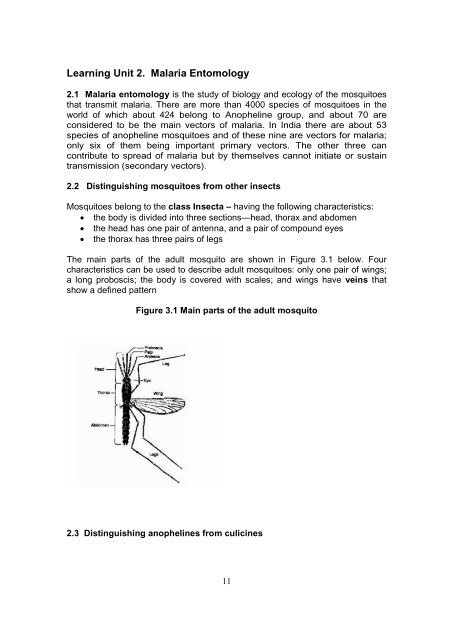Training Module for Medical Officer - NVBDCP
Training Module for Medical Officer - NVBDCP
Training Module for Medical Officer - NVBDCP
You also want an ePaper? Increase the reach of your titles
YUMPU automatically turns print PDFs into web optimized ePapers that Google loves.
Learning Unit 2. Malaria Entomology2.1 Malaria entomology is the study of biology and ecology of the mosquitoesthat transmit malaria. There are more than 4000 species of mosquitoes in theworld of which about 424 belong to Anopheline group, and about 70 areconsidered to be the main vectors of malaria. In India there are about 53species of anopheline mosquitoes and of these nine are vectors <strong>for</strong> malaria;only six of them being important primary vectors. The other three cancontribute to spread of malaria but by themselves cannot initiate or sustaintransmission (secondary vectors).2.2 Distinguishing mosquitoes from other insectsMosquitoes belong to the class Insecta – having the following characteristics: the body is divided into three sections—head, thorax and abdomen the head has one pair of antenna, and a pair of compound eyes the thorax has three pairs of legsThe main parts of the adult mosquito are shown in Figure 3.1 below. Fourcharacteristics can be used to describe adult mosquitoes: only one pair of wings;a long proboscis; the body is covered with scales; and wings have veins thatshow a defined patternFigure 3.1 Main parts of the adult mosquito2.3 Distinguishing anophelines from culicines11
















